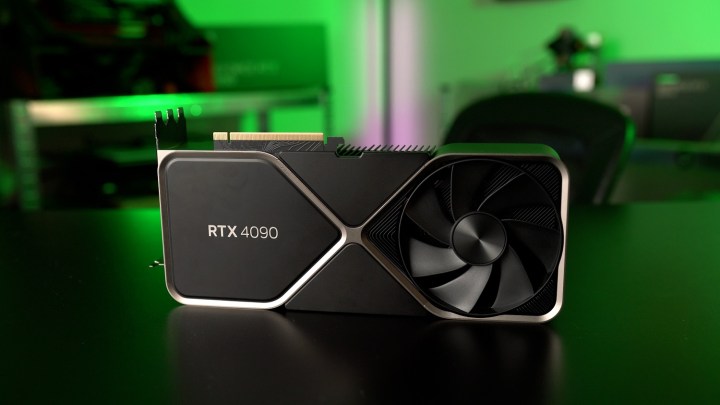Nvidia may have shifted some of its production away from the RTX 4090 and to its high-performance computing solution, the H100 Hopper. This could mean bad news for gamers.
If Nvidia is really scaling back on the production volume of the RTX 4090, are we going to end up with another GPU shortage?

According to a rumor first shared by MyDrivers, Nvidia may indeed have changed some of its orders made to the Taiwan Semiconductor Manufacturing Company (TSMC). Nvidia turns to TSMC for the production of many of its different chips, and depending on needs, it may shift some orders as required. This doesn’t cause an immediate change in the market, though, but it can affect it in the long term.
Nvidia cooperates with TSMC both on its high-end AD102 chip, found in the RTX 4090, and on the GH100. The latter is a GPU that belongs to the Hopper lineup and serves a different role as a high-performance computing (HPC) chip. While the AD102 is found in consumer-level GPUs, the GH100 is definitely not; Nvidia advertises it as a solution for data centers that’s capable of handling the most demanding workloads. Despite these differences, both the chips are made on the same fabs, which means that TSMC should be able to switch lanes from the AD102 to the H100.
Why would Nvidia choose to dial back the production of the RTX 4090, which is easily the best graphics card available right now? The answer might be as simple as wanting to make a greater profit. The Nvidia GeForce RTX 4090 launched with a list price of $1,599, but the Nvidia H100 GPU can cost in the tens of thousands of dollars, with some versions of it being sold for as high as $39,000 — although the average price will probably be closer to $10,000 to $15,000, as reported by Tom’s Hardware.
Seeing as the chips are similar in terms of complexity, and the production shift can likely be done without much effort (although it’s unclear how difficult it might be for Nvidia to change its order), it makes sense as to why Nvidia would go for the chip with the higher profit margin.

This does leave gamers in a precarious position, because the demand for the RTX 4090 might remain higher than the supply. It all depends on just how much Nvidia may have shifted its priorities in the GH100’s favor.
There’s also the question of price. The RTX 4090 is a very expensive GPU, and Nvidia doesn’t plan to bring those prices down, so lowering the supply of that graphics card leaves room for scalpers to push the prices up even further. We’ve seen all too much of that during the GPU shortage and we’d hate to see it come back in any major way.
Now, for the good news — it’s too early to start worrying. We don’t know whether Nvidia actually has reallocated some of its production orders; it could just be a rumor. Even if it has, the vast majority of consumers won’t be buying $1,600 graphics cards left and right. Unfortunately, those who aim for the top and get an RTX 4090, might one day soon see an uptick in pricing if Nvidia has indeed changed its plans.




